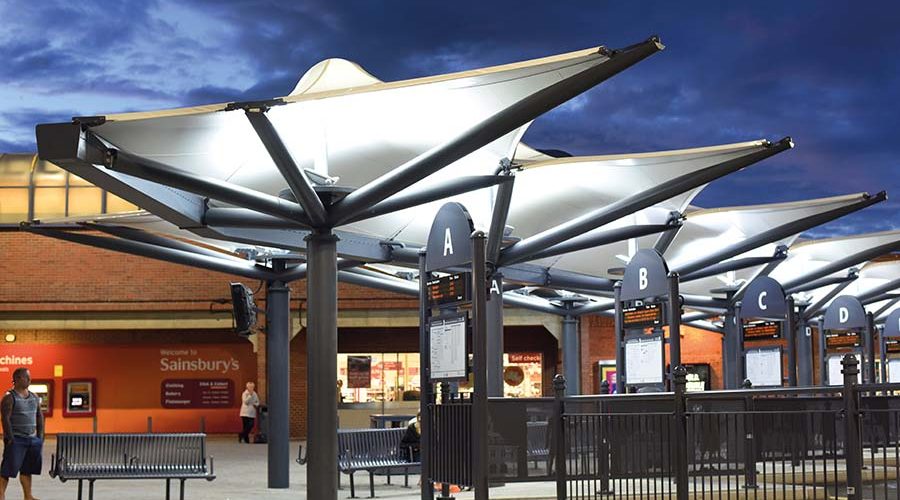Incorporating stylish and durable products into a public realm setting addresses the key characteristics of a well-designed open space, writes John Boyle, Commercial Director at street furniture specialist Broxap.
Broxap
Well-designed places have to look good, as well as have function and purpose. This can be especially so when incorporating products that the public engage with.
These can influence a location by improving quality of life for those who use it, encouraging repeat and increased numbers of visits and enhancing their value as community assets.
The creation and maintenance of a public realm that thrives lies in a design which meets the needs of many different groups of people. And crucially, with the addition of modern or traditional shelters, canopies and other street furniture, cost efficiency can also be achieved for the public sector thanks to their easy maintenance and the use of robust, high-quality materials.
Project design based on aspirations
At the start of this year, the Government announced a range of measures to prioritise good design in placemaking, putting communities at the heart of decision making. Places that work and places where people want to be have 10 defining features, according to the National Design Guide.
Detailed guidance referring to these 10 characteristics is now set to be published, providing a framework for local planning authorities to work to.
It says a well-designed place:
1. Is made to last
2. Enhances the surroundings
3. Is attractive and distinctive
4. Follows a coherent pattern of development
5. Is accessible and easy to move around
6. Enhances and optimises nature
7. Is safe, social and inclusive
8. Has mixed and integrated uses
9. Is efficient and resilient
10. Is functional, healthy and sustainable.
It stands to reason then, when incorporating environmentally-enhancing shelters, canopies and furniture into the public realm, that they should also follow the same principles.
Connecting people to place
Public consultation is already an integral part of public planning and design, and it works. Take the regeneration of King’s Lynn Transport Interchange.
A sum of cash was made available to the Borough Council of King’s Lynn and West Norfolk through Section 106 agreements to create a more welcoming bus station area and link to the town’s railway station.
A survey carried out prior to the refurbishment identified a series of issues to overcome including dated infrastructure, insufficient seating, a perception of anti-social behaviour and safety concerns linked to pedestrian access.
The provision of a canopy was the critical element in the project and one that Broxap scored highest for in the tendering process based on price, area covered, ongoing maintenance implications and suitable design.
To be part of a sustainable public place, the design and manufacture of the canopy had to go much further than simply providing shelter.
The wave crest style of the bespoke tensile structure followed the new herringbone layout for the bus departure bays, and included uplighters to enhance security, visibility and movement.
The centrepiece was complemented with safety barrier panels which celebrated local distinctiveness, depicting local naval officer and explorer George Vancouver and the town’s iconic Custom House.
Outcomes reported by the council included an increase in footfall and the number of bus services operating from the station, a reduced perception of anti-social behaviour and reduced maintenance costs.
The project was also a winner in the Mayor’s Design Awards which highlighted the role of design and workmanship in attracting more visitors and businesses to West Norfolk.
This nod of recognition not only reflected the improved appearance of the bus station, thanks to the canopy installation, but also the part its design played in creating a cohesive public realm setting.
At a time when the importance of access to public outdoor space has never been felt so keenly, a well-designed shelter or canopy can transform an external area to substantially and cost-effectively meet social and functional needs.








